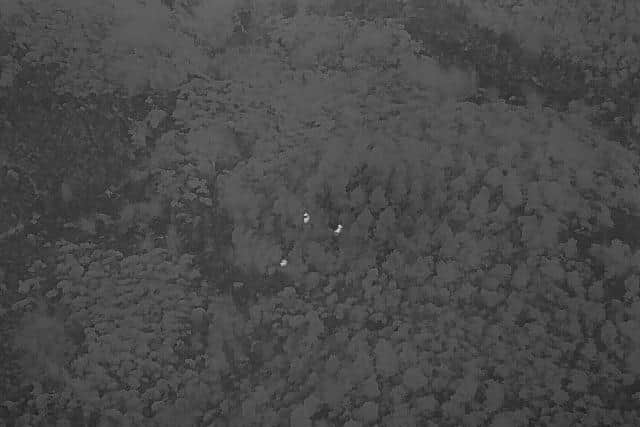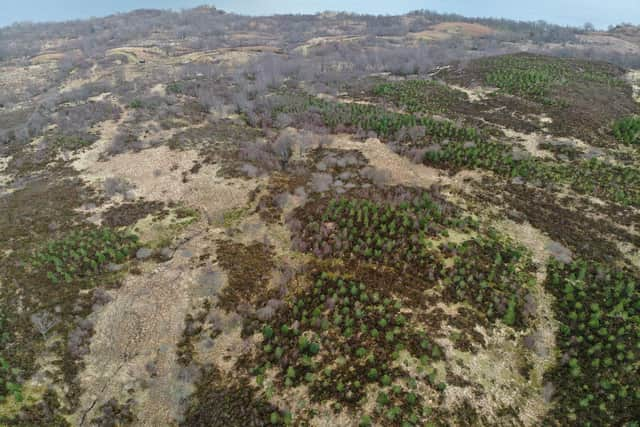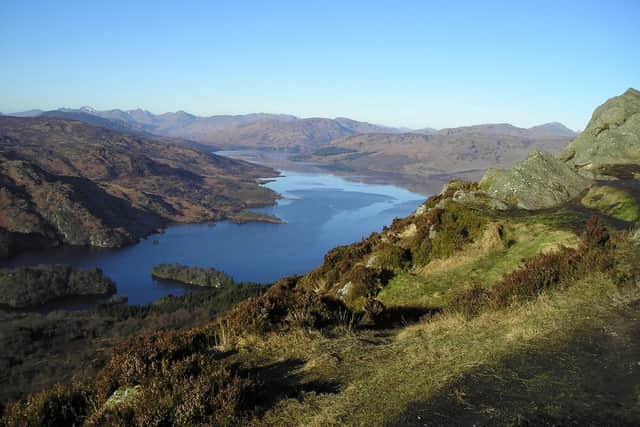How drones are being used to remotely spot deer herds and protect new woodlands in Scottish Highlands
The technology is able to pinpoint the location of deer within a forest and can even indicate the species and sex of the animals.
The footage is being used by foresters to monitor exact numbers of deer, which cause damage to saplings and hamper regeneration and creation of woodlands, and target necessary culls to keep numbers down.
Advertisement
Hide AdAdvertisement
Hide AdThe move comes as part of a project to create the new Great Trossachs Forest National Nature Reserve, which will be one of the largest areas of native woodland in Scotland, stretching across 14,500 hectares of the Highlands.
Great Trossachs Forest is the UK's newest and biggest national nature reserve and one of the most significant native woodland projects in the UK for a generation.
According to Scotland’s forestry agency, which is leading the scheme, there have been increased reports of the deer entering an enclosed conservation area with newly planted trees stretching across 1,000 hectares around Loch Katrine and munching on the emerging shoots.
The land is undergoing a renewed management plan by Forestry and Land Scotland (FLS) in a bid to create up to 2,000 hectares of new woodland with reduced fencing.


If the trials continue to produce successful results, drone thermal imaging could be a crucial tool in managing the local deer population through sustainable culling.
Ian Fergusson, head of wildlife management at FLS, said: “In order to develop the new land management plan for the area and to prevent any further damage to the young woodland, we knew we had to introduce a viable way of controlling the deer population.
“This new technology has the ability to spot the exact location of deer, which will improve FLS deer culling abilities in a sustainable manner.
“As trials of the drone thermal imaging show successful results, the method should continue to help ensure each woodland enclosure is left with a very limited number of deer inside the area.”


Advertisement
Hide AdAdvertisement
Hide AdDeer numbers in Scotland are estimated to have doubled in the past 30 years and are now estimated at more than one million animals.
There are four species living in the wild in Scotland – native red and roe, plus fallow and sika, which were introduced through deliberate releases and escapes from country parks.
FLS is working on the Great Trossachs Forest project in partnership with conservation charities Woodland Trust and RSPB Scotland.


The new reserve will see the land rise from the loch shore through pasture and woodlands of oak, birch, alder and Scots pine, before blending with open moorland and the more exposed higher slopes.
To help protect Scotland’s national forests and land from the negative impacts of deer, FLS employs a number of techniques, including deer culling and fencing, to keep numbers down to sustainable levels, keeping animals healthy and mitigating against habitat loss.
The use of thermal imaging comes after FLS recently announced a trial of Nofence GPS collars on cows at Glentrool in Dumfries and Galloway to promote self-seeded broadleaf forest regeneration from the nearby Glentrool Oakwoods, a site of special scientific interest.
Comments
Want to join the conversation? Please or to comment on this article.
